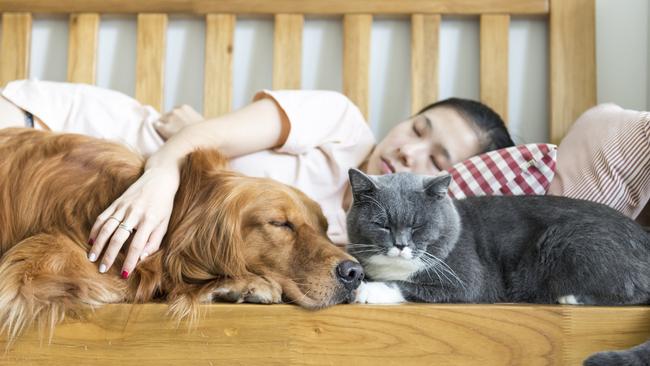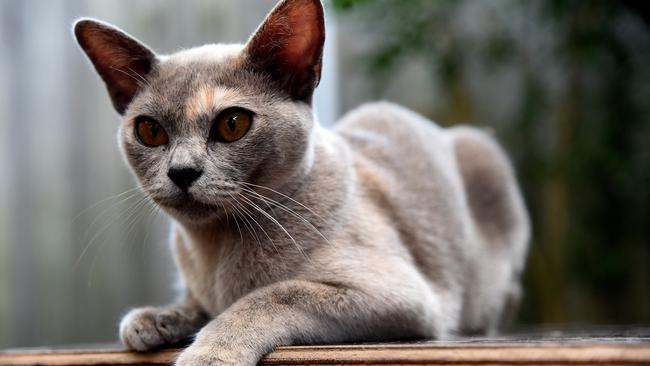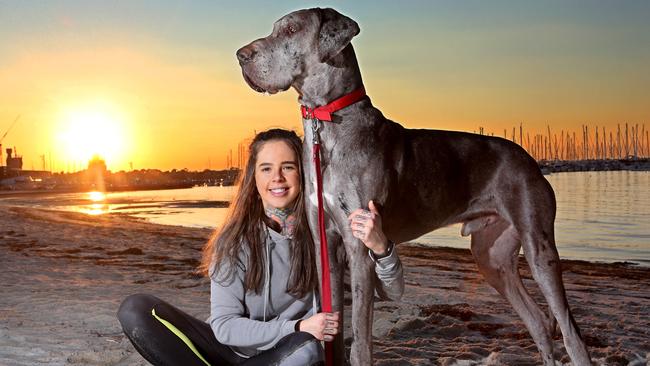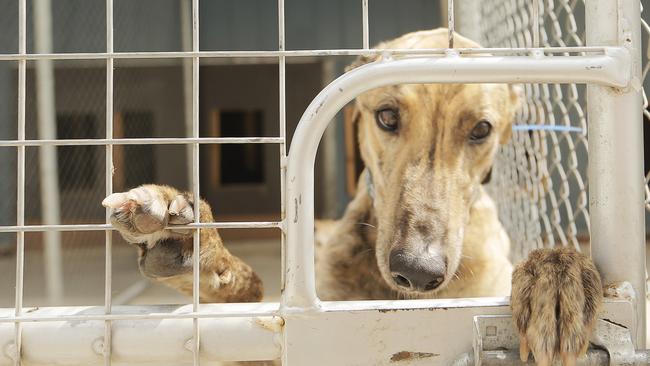Cats vs dogs: A guide to help you choose the better pet for you
Choosing between a cat and dog is tricky. Dogs need lots of stimulation and regular walks, while cats are happy to be left alone. Which pet is best for you?
Pets
Don't miss out on the headlines from Pets. Followed categories will be added to My News.
It is the ultimate dilemma for anyone considering a pet — do you get a dog or a cat?
A dog can be energetic and unperturbed and a cat can be independent and affectionate.
It’s difficult to decide the right kind of pet that would better suit you and your family, and there are many factors to take into account.
The Animal Referral Hospital director of emergency and critical care Dr James Carroll has shared some helpful insights into the main differences between caring for both cats and dogs.
KEY DIFFERENCES
Dr James Carroll said that cats were lower maintenance — and certainly more independent — than dogs who are hardwired with a pack mentality which makes them social, friendly and happy to belong to a family that can provide food and leadership.
Being left alone for long periods of time can be upsetting for a dog, so they are best suited to owners who are able to provide them with lots of playful attention.
“Therefore dogs have increased requirements around exercise and interactions whereas cats can be purely an indoor pet,” he said. “While they still require environmental stimulation and interaction, the need for that can be lower.”

TRAINING
Believe it or not, cats can be trained.
Dr Carroll said because cats were more independent, they were generally more challenging to train than dogs — but it was not impossible.
There’s a saying that Dr Carroll uses: “Dogs have masters and cats have staff,” which essentially means – cats are strong willed. Dogs however are generally easier to train in game play and command.
“People have trained their cats to do amazing things and some breeds of cats are more receptive to certain types of training,” Dr Carroll said.
“Burmese cats can be more easily trained to play with a ball similar to the ways dogs play with a ball – if you set it up to succeed, they will pick things up like toilet training a lot quicker than dogs because they decide that they want to do it.”
Space is a major factor when looking after both cats and dogs – but both animals come in various sizes and it’s difficult to truly determine what’s best for your pet.

SPACE
It’s obvious that dogs will need a lot of space – more than a cat would, however that doesn’t mean cats won’t need their space as well. Dogs require exercise and explore their environment but it does vary from dog to dog – and age and life cycle.
“Greyhounds love to be walked and yet they are also incredibly lazy,” Dr Carroll said.
Cats love their environmental enrichment and that can include access to the outside but Dr Carroll said it was important to balance that with possible environmental and safety factors.
“There’s the risk of car accidents that can occur but there has been a societal change around the views of cats. A part of that is a lot of people now have cat enclosures where they’re free to explore outside but can’t leave the yard,” he said.
One of the major deciding factors was the cost of upkeep of both cats and dogs. People tend to think that dogs are more expensive because they’re considerably larger – and it may ring true.
COST OF UPKEEP
Dr Carroll said that the cost of upkeep generally circulates around nutrition and bedding. In terms of getting a cat, it’s paying for kitty litter if they are an indoor pet. But the biggest variable is the cost of food.
“A 70kg Great Dane is going to eat a lot more than a 4kg cat and the biggest factor then is the size of the animal and their dietary requirements,” he said.
Beyond that, there’s the routine veterinary care costs of annual check-ups, vaccinations, preventive procedures, and maintenance procedures such as desexing and dental care. And taking it further, there’s the risk of illnesses and accidents.
“However, cats tend to have less visits to the vet on average, whether that is to do with cats being ill less frequently or the fact that they hide their symptoms more effectively than dogs,” Dr Carroll said.
Children are another factor that one considers when getting either a cat or dog. Just as people have personality, so do our pets.

CHILDREN
Dr Carroll said that pets and children is something that one has to consider carefully – all pets are different. Children will need to be introduced to pets gradually in a careful manner that will end with a positive experience for the pet, whether it’s a cat or dog.
“Cats will tend to be more readily able to remove themselves from the situation if they’re not enjoying the experience but negative outcomes can occur,” he said.
“It’s important to remember that if a child is coming into the animal’s environment, it’s more likely that the animal’s behaviours and life is already established, therefore it may upset their routine whether it’s a cat or dog.”
Negative behaviour can be exhibited in different ways. Cats show their stress and anxiety through hiding away and this can lead to other health problems such as urine retractions from stress.
With dogs, there can be concerns surrounding aggressive incidents which is rare but it’s important to remember that its related to their anxiety.
Time is also a factor to take into account when getting a pet as it tends to make life a little more hectic. Dogs will need to have time spent with them to get that exercise growing up. For cats, they’re lower maintenance so it may be an easier choice.
There are health benefits in having a dog or cat as pets can help children with their emotional wellbeing and assist them with developing empathy, Dr Carroll said.
DO YOUR RESEARCH
Before getting either pet, you should ensure the environment is suitable for the animal, and whether it’s likely to stay that way in the future. The life span of these animals are generally between 10-15 years. Committing to providing the necessary environment, time and health care is the most important aspect of getting a pet.
“Research includes having fund requirements for your pet – pet insurance to cover the unexpected illnesses and accidents,” Dr Carroll said.

There’s strong support behind people adopting a cat or dog from shelters because it’s saving a life. As part of your research, potential owners should decide the type of animal that best suits your home environment. The way to do this is to work with the shelter.
Dr Carroll said, “We have to remember that behaviour is a summation of your personality, your previous experiences.
“The situation you’re in now will determine the type of animal from these shelters is best for you because most often these guys will have had a rough start in life.
“Shelters act responsibly and will have a better idea of the behaviour of these animals in their care – they make sure to match people with the animal.”
ARH vets and the Animal Emergency Centres (AEC) network are available for emergencies and specialist referrals. Phone 1300 232 838 to contact your nearest clinic.
Originally published as Cats vs dogs: A guide to help you choose the better pet for you
